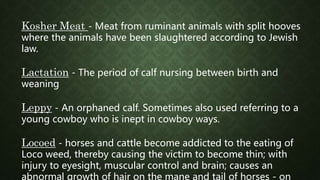This document provides definitions for various terminology used in the beef cattle industry. It defines 20 terms, including ad lib feeding, artificial insemination, average daily gain, backcross, barbed wire, birth weight, and biosecurity. The definitions cover production, management, health, and marketing terms related to beef cattle.










































